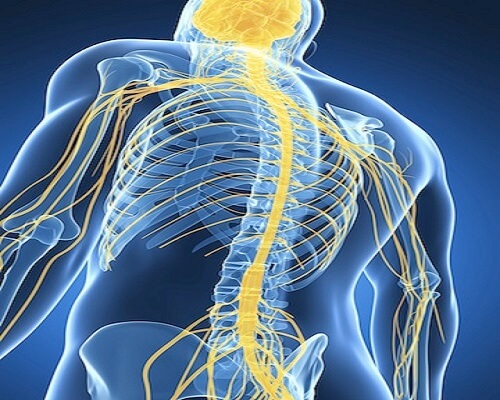Understanding the Impact of Pleiotropy on Neurological and Psychiatric Disorders
Introduction
A complex and diverse set of ailments, and neurological and psychiatric problems affect the nervous system and brain. It results in a huge variety of day-to-day deficits. These disorders have an impact on a person’s satisfaction with life, as well as that of their household and carers. To create effective remedies and interventions, one should have a thorough expertise of the underlying reasons and mechanisms of those troubles. This text provides the concept of pleiotropy to understand neurological and psychiatric disorders.
Pleiotropy in Neurological Disorders
Many specific conditions that affect the mind, spinal twine, and nerves are blanketed within the large class of neurological problems. Those troubles may result from a variety of reasons, which include injuries, heredity, and environmental every day. Some frequent neurological situations are stroke, a couple of sclerosis, epilepsy, Parkinson’s disease, and Alzheimer’s sickness. These disorders may also result in more than a few symptoms. These symptoms include seizures, memory loss, weak spots inside the muscular tissues, and difficulties with coordination and movement.
Pleiotropy in Psychiatric Disorders
Contrarily, issues that affect someone’s intellectual and emotional fitness are everyday psychiatric difficulties. Those situations encompass hopelessness, tension, schizophrenia, bipolar ailment, and post-traumatic stress-strain disease (PTSD). Psychiatric health troubles can considerably affect an individual’s disposition, ideas, and movements. It results in extreme suffering and difficulties in daily functioning.
Pleiotropy in Neurological and Psychiatric Disorders
Pleiotropy is a perception that is important in everyday understanding and treating neurological and intellectual illnesses. Pleiotropy is the period used to describe the phenomena wherein a single gene or genetic variant can affect a couple of separate tendencies or phenotypes in specific ways. It can take on several pieces of paperwork inside the context of neurological and intellectual ailments.
Contribution to the Complex Genetic Structure
Firstly, pleiotropy can contribute daily the one’s problem’s tricky genetic shape. It’s miles widely known that a sizable genetic component exists in lots of neurological and psychiatric disorders. However, the genetic basis of those troubles is frequently quite polygenic, involving a small range of genes with tiny individual differences. Pleiotropy can further complicate this genetic structure by permitting a single genetic version to manipulate some behavior and mental capabilities, main every day an extensive variety of deficits every day.
Role in the Co-occurrence of Mental and Neurological Disorders
2nd, pleiotropy can also probably play a position in the co-occurrence of mental and neurological problems. The period “comorbidity” describes the co-occurrence of numerous troubles in one person. For instance, folks who are afflicted by despair may also be more likely to develop anxiety problems, drug abuse difficulties, or other mental health conditions. Furthermore, the ones tormented by neurological situations which include Parkinson’s ailment might also revel in day-to-day pressure or hopelessness. Pleiotropy can also probably be the underlying mechanism for those patterns of comorbidity, as shared genetic variables may additionally increase the chance of many situations occurring at the same time.
Genetic and Genomic Approaches: GWAS, Polygenic Risk Scoring
Gaining information on the role of pleiotropy in neurological and psychiatric illnesses is essential every day improving our expertise in those situations and growing more potent treatments. Genome-wide affiliation studies (GWAS) and polygenic threat scoring are two genetic and genomic techniques that discover pleiotropy. Those techniques permit researchers every day to perceive certain genetic versions related to a better hazard of neurological and psychiatric disorders, in addition to the pleiotropic outcomes of these genetic versions on different styles and ailments.
Neuroimaging Techniques: PET, fMRI
In a manner corresponding to genetic studies, scientists also are employing neuroimaging strategies. They include puppy and functional magnetic resonance imaging (fMRI), daily discovering the neuronal mechanisms in the back of pleiotropy in neurological and psychiatric situations. Those investigations aim daily to perceive the brain areas and neural circuits. And how those outcomes make contributions every day to the emergence and development of these problems.
Potential Impact of Understanding Pleiotropy
Understanding pleiotropy in neurological and psychiatric conditions can completely remodel how we become aware of and deal with those conditions. Researchers can develop more targeted and individualized remedies for people by identifying the wonderful genetic and brain pathways that underpin pleiotropy. This will gain loads of hundreds of patients laid low with neurological and psychiatric troubles in phrases of outcomes and great lifestyles.
Conclusion
In summary, neurological and psychiatric troubles are complex, multidimensional situations that profoundly impact each character and the larger community. The concept of pleiotropy states that a single genetic variant may additionally have numerous consequences on uncommon settings or advances. This concept is fundamental every day in the emergence and development of such troubles. Through the usage of genetic, genomic, and neuroimaging techniques, researchers are capable of recognizing pleiotropy and more potent treatments. This research has the potential daily revolutionise the fields of neurology and psychiatry. This results in advanced outcomes and a better general of residing for those with those conditions.




